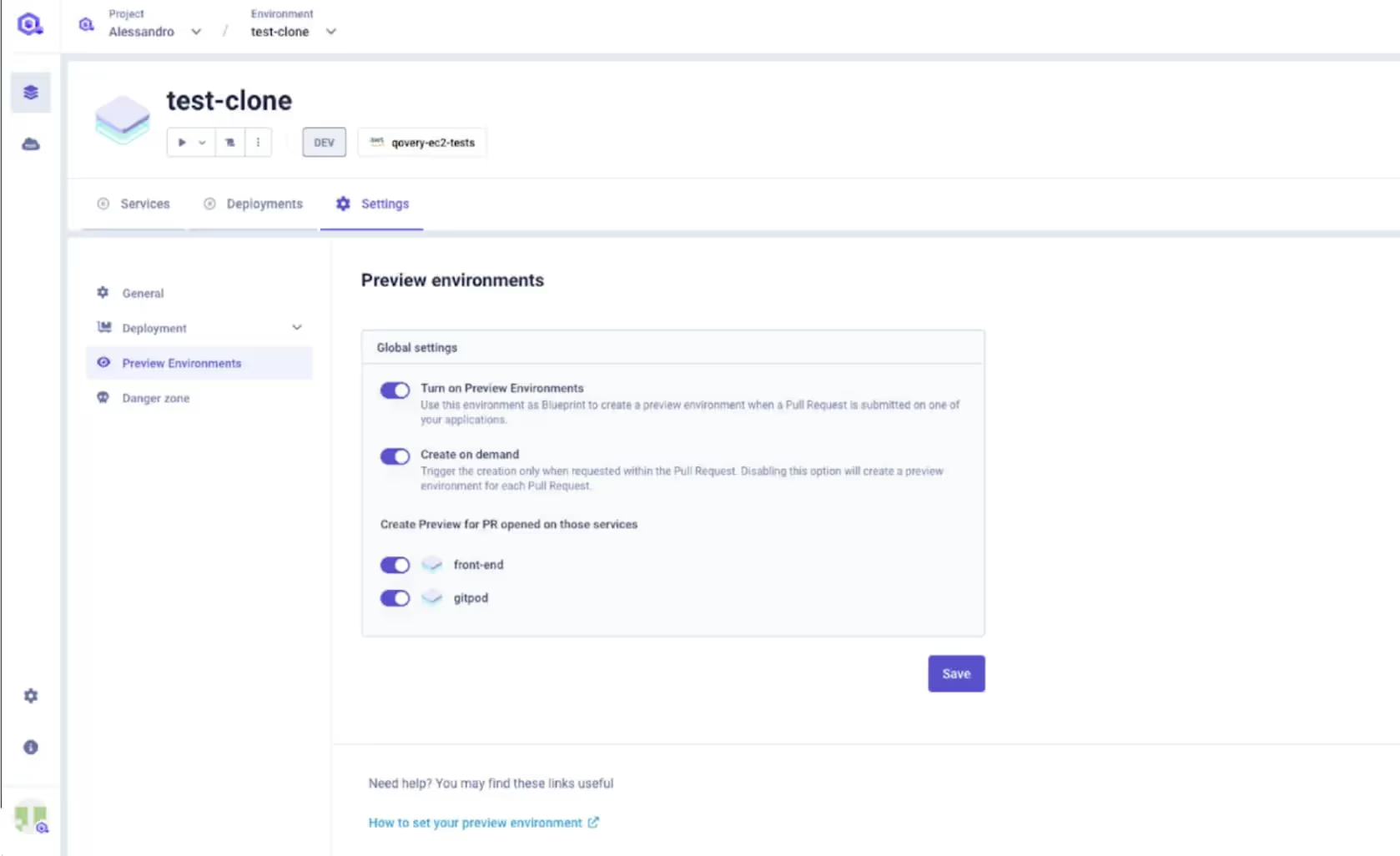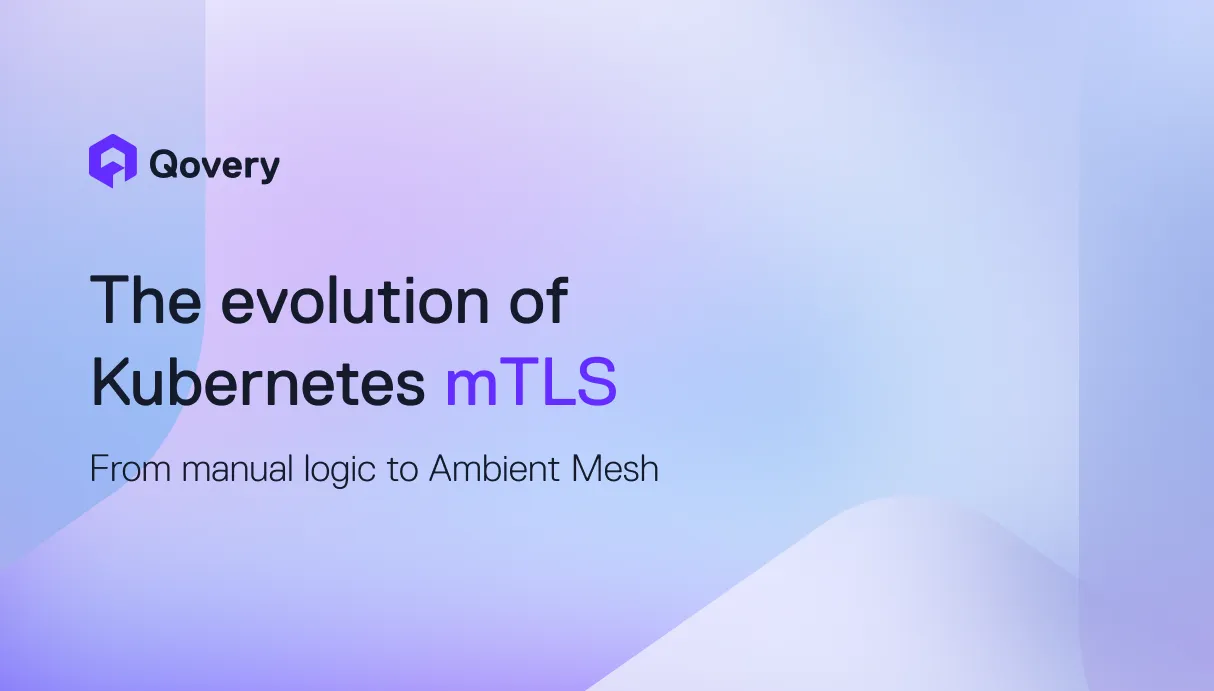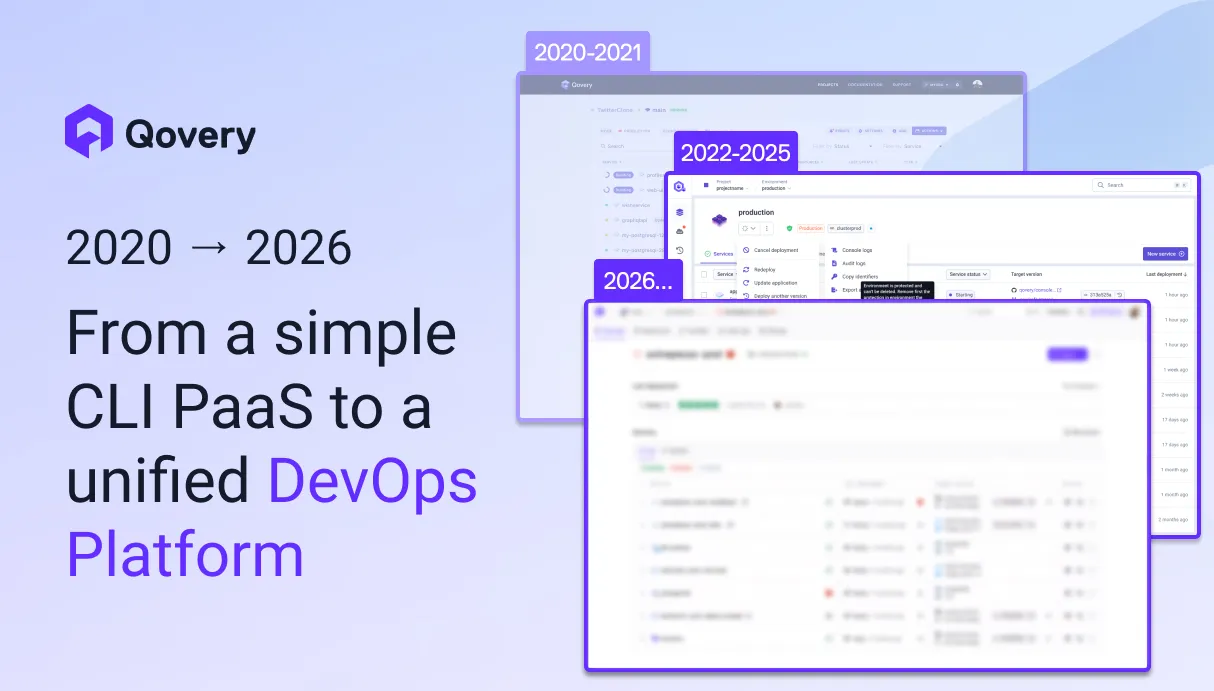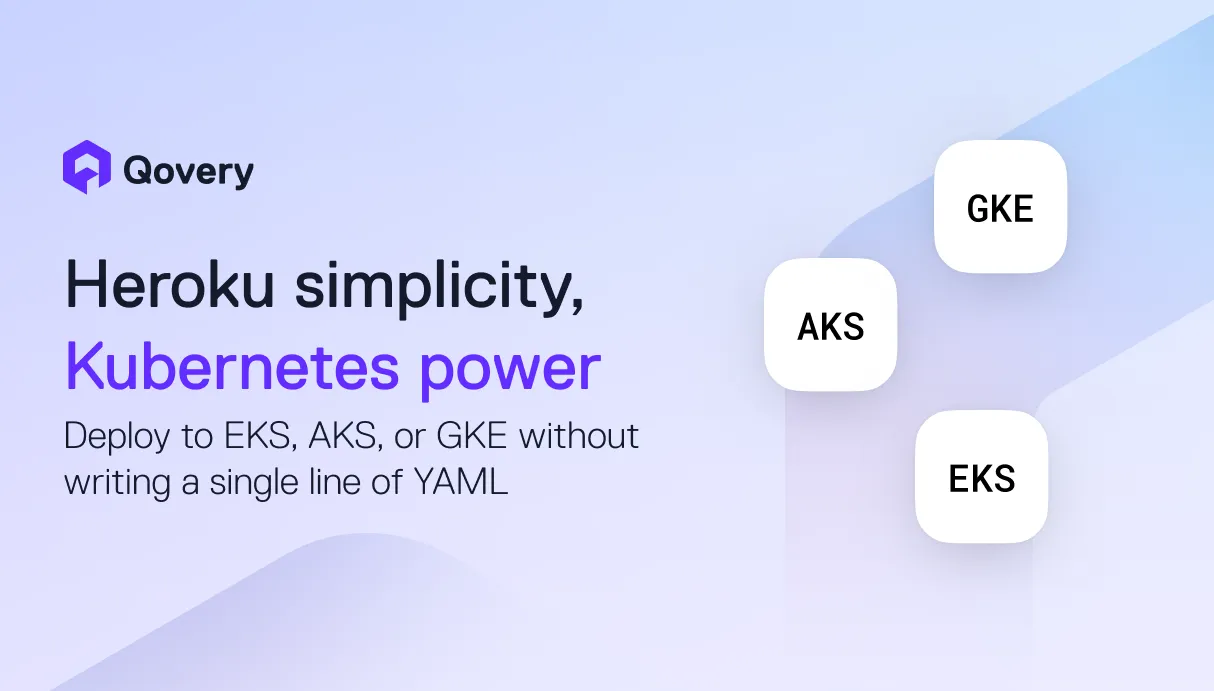

How Mid-Sized Teams Can Scale DevOps Without Hiring More



Key Points:
- Mid-sized teams can scale DevOps by automating, optimizing workflows, and fostering self-service culture.
- Comprehensive automation (IaC, CI/CD, dynamic environments) eliminates manual toil, speeding up delivery.
- Empowering teams, continuous learning, and clear processes drive efficient, collaborative, and adaptable DevOps.
- Qovery provides a unique platform to enable this smart, automated, and self-service scaling of DevOps.
The Mid-Sized DevOps Dilemma
Your company has found its stride and achieved product-market fit, it's time to scale. As your engineering organization grows from dozens to hundreds, a critical bottleneck often emerges: deployment and infrastructure.
More features, new products, and rapidly expanding teams create a surge in release demands and an increasingly complex infrastructure. Your DevOps team, however, usually doesn't scale proportionally, facing immense pressure to deliver with a limited budget and headcount.
Facing these challenges, teams need to look ahead to increase their efficiency sustainably. In this article, we’ll review how to scale efficiently through automation, smart investments, and cultural changes.
Beyond Headcount: The Pillars of Efficient DevOps Scaling
Through this section, we’ll explore the various efforts engineering organizations can take to improve efficiency for a DevOps team:
- Automation: eliminating manual toil through streamlined processes, implementing infrastructure as code, and strong monitoring.
- Process Optimization: providing strategic frameworks, establishing clear ownership models, and streamlining workflows across teams.
- Culture: fostering collaboration through shared values, embracing learning as an organization, and owning services all together.
- Skill Development: ensuring sustainable growth for the organization, creating knowledge-sharing practices, and keeping team members challenged throughout their careers.
- Measuring Success: keeping engineering excellence going forward with indicators coming from different parts of the organization.
All these efforts are not isolated from one another, they create a compounding effect, improving the teams' experience and productivity, at each step of product development.
Hyper-Focus on Comprehensive Automation
Modern DevOps automation begins with standardizing the way the team interacts with the infrastructure. Infrastructure as Code ensures all infrastructure interactions are idempotent, and reproducible, leaving the infrastructure immutable and free from possible human errors.
1. Infrastructure as Code
Modern tools like Terraform abstract all infrastructure pieces deployed onto the cloud to a parsable, reviewable code letting engineers manage deployments at scale using automated processes. Infrastructure provisioning becomes reliable and trusted by all DevOps engineers, using their codebase as a single source of truth for everything they manage on the cloud.
2. CI/CD
Continuous Integration / Continuous Delivery (CI/CD) is the core automation process to deliver applications with confidence. With a growing organization with the accompanying multiplication of pipelines, DevOps teams can work on optimizing their delivery pipelines to reduce time-to-deploy and feedback loop times.
- Parallelize tests and routine checks
Parallelization of tests or routine checks on CI/CD pipelines can save minutes of a build or deployment at a time. Running all unit tests concurrently instead of one after the other for example, can make pipelines exit successfully or in failure way quicker.
- Improve caching on build pipelines
Similar to an effort for parallelization, improved caching on the build pipeline can save minutes of build-time, dependency installation, or asset loading. These few minutes saved per pipeline run compound and scale for each engineer building and testing software every day, spanning months, enormous time is saved and re-invested into product development.

3. Dynamic Environments
Benefiting from infrastructure as code, DevOps teams can deliver on-demand environments for engineers to experiment, test, and work on their services. These setups, separated from regular production or staging environments, offer a fully isolated space consistent with what a real production would look like.
Having the ability to duplicate an environment at will has a huge impact on setup times and code quality, ensuring that the work done in an ephemeral environment will work in production.

4. Testing & Security
When an engineering organization heavily relies on automation, robust testing within these pipelines is crucial to ensure that improving velocity doesn't compromise the quality of delivered products.
Here's how to achieve robust testing and security within automated pipelines:
- Automated End-to-End Testing: End-to-end testing should run automatically on every new commit. This catches issues early in the development cycle, preventing them from reaching production or even code review.
- Implement Quality Gates: Use quality gates to enforce code quality based on specific metrics. For example, setting baselines for code coverage or performance analytics before deployment to production helps prevent a high delivery rate from negatively impacting code quality.
- Enhance with Automated Security Testing
- Integrate static analysis on every commit. This ensures known vulnerabilities are identified early, leading to more robust code.
- Utilize automated dependency analysis to verify that all libraries and tools used by the organization are up-to-date and secure for embedding within products.
Observability
Once code reaches production, observability is the main tool that gives engineers confidence that things are working correctly. Implementing automated alerts, comprehensive dashboards and better visibility over services helps identify problematic patterns and detect issues as soon as they might impact customers.

Streamlining Processes and Workflows for Velocity
1. Golden Path
A growing engineering organization must work on standardizing the way they develop products. A huge amount of velocity can be gained for all the product organizations by creating reusable patterns, easy onboarding, and shared configuration for building and deploying a new product.
Automations here enforce this simplicity by re-using what already exists and works and making it a golden path for engineers to follow.
2. Breaking Silos
Traditional engineering structures bound engineers to their role, breaking down the barriers between teams and allowing direct interaction is beneficial to team interaction and general velocity.
- Empower Teams with Self-Service Tools: A great way to improve interactions is by enabling "client" teams to use self-service automation tools to manage services offered by other teams. This approach drastically reduces hand-offs and the friction of teams waiting on one another, leading to a better understanding and enhanced collaboration across the board.
- Identify and Address Bottlenecks with Value Stream Mapping: Regularly (every few months) encourage teams to highlight and bring attention to parts of their workflows that are consuming more time than necessary. Visualizing the entire production pipeline, from idea to release, using Value Stream Mapping is an excellent method to identify bottlenecks and wasted time within the delivery process. These identified areas then become actionable items for the owning teams, directly reducing pain points and improving velocity for everyone.
3. Managing Outages
Mistakes and outages will always happen, however, an organization’s reaction to them can evolve. Taking the time to understand the reason things go wrong and identify ways for them not to happen again is critical to continuously better the service for your customers.
Improving automated systems to prevent errors that have happened in the past is a great way of leveraging a dynamic environment to enhance the organization's engineering excellence.
4. Keeping Documentation Updated
Finally, documentation as code can solve the persistent problem of unmaintained knowledge bases. Making it habitual (or automatic) to update documentation as code is pushed to production brings a level of accountability and ownership to teams that then reflects on how code is maintained.
For example: Documentation can be autogenerated while using tools like Infrastructure as Code or OpenAPI specs, becoming an integral part of the product and not an afterthought.
Cultivating a DevOps Culture of Empowerment and Self-Service
1. Team Collaboration
- Fostering Collaborative Ownership
The traditional model of “Dev owns code, Ops owns production” is antiquated. It creates an opposition between the two roles that generates friction and disagreements harming the functioning of an organization. When each team only focuses on its own issue, they miss opportunities to improve processes and interactions. Moving away from this model to a shared understanding and accountability that makes them care for one another can bring so much to an organization. Ops care more about the architectural choices of an application, and Devs care more about the production environment and its monitoring.
- Empowering Engineers with Self-Service
Similarly, ops are not meant to become gatekeepers of the infrastructure and make all decisions run through them. Enabling other engineers by letting them use tools autonomously to let them explore the possibilities of infrastructure, deploy applications, and manage configuration safely enhances their ability to run their services. This further reduces the mental load and operational bottleneck often found in infrastructure teams while empowering engineers to own their services end-to-end.
2. Knowledge Sharing & Empathy
Individual expertise is a strength within any engineering organization but can become a hurdle when there is no opportunity to share knowledge with the rest of the organization. Encouraging engineers to share their challenges, solutions, and engineering excellence is a transformational step for a cohesive organization. Reducing reliance on individuals brings teams together as they face the bigger challenges of the company while everyone is still growing individually.
- Embracing Mistakes as Learning Opportunities
A mistake should never be penalized or feared. For engineers to feel fulfilled, they need to be able to take risks, understand their impacts, and learn through the potential occurring failures. A big part of an inclusive and supportive culture is to allow mistakes, turn them into lessons, own them as a collective, and move forward with an even bigger appetite for experimentation, striving to do better while growing as engineers.
Investing in Skills and Continuous Learning
Building successful teams demands the constant evolution of skills and knowledge for each team member. Encouraging continuous learning is vital to staying at the edge of technology and mastery of the engineering craft.
1. Raising the bar collectively
One way to keep engineers learning is for them to deeply understand the work that their peers are doing. Cross-skilling breaks down the barriers between teams while improving their relationship, understanding the work of a team you depend on brings lower friction and easier hand-off when interacting with one another. This doesn’t mean that everyone should be an expert everywhere, but raising knowledge and empathy for your peers only improves collaboration and teamwork at any stage of delivery.
Fostering continuous learning aims at building an engineering culture where every team member possesses deep expertise about their own work while having this breadth of knowledge across all the other disciplines being worked alongside them. This develops curiosity and care for all the jobs a company needs to run correctly, even extending to roles outside of an engineering department.
- Structuring Knowledge Exchange
Internal guilds are solutions to bring structure to knowledge sharing and exchange between engineers possessing the same array of skills. Building a recurring place for them to discuss and build on one another's ideas is a catalyst for a more proactive engineering culture, looking to use their technical leadership to bring the company forward.
2. Contributing to the wider community
Finally, connecting an engineering organization to the wider communities of the internet through open-sourcing, community talks, blog posts or any other contribution that can reach outside of the company is essential.
Not only does this bring meaning to engineers by elevating their work outside of the usual confinement of the company, but it also brings visibility to your company as an impactful engineering actor, reinforcing its positioning and credibility among the community.
Measuring Success and Iteration
There are some key metrics that can help an organization bring visibility into its DevOps efficiency. While a lot can hide behind those numbers, the following can be used as a proxy for measuring how well the teams are producing and interacting with one another in a context of automation and engineering excellence.
- Lead Time for Change: This signifies the time-to-production for a new feature being developed, tracking the time from a commit created by an engineer until it has been deployed to production. Automation drastically reduces the time for code to be validated, reviewed, and deployed, the lower this number the better.
- Mean time to resolve: When a production-impacting incident happens, this tracks the time needed from incident detection until full resolution. While errors happen and are common, teams should aim to have the ability to resolve customer-impacting issues as quickly as possible.
- Pipeline Execution Time: This refers to the time engineers spend waiting for pipelines to complete.. Tracking this time across the board, identifying outliers that run slower than the rest, and tracking their impact is key to improving velocity and quality of life for engineers. Aiming to reduce this number as much as possible liberates time and productivity for all teams.
- Monitoring Coverage: Knowing how many services are correctly monitored is key to releasing with confidence. Understanding how many blindspots operational teams have and how important they are lets them focus on resolving them, impacting incident response time and on-call burden down the line. Knowing that teams have healthy monitoring coverage lets them produce more confidently, without fear of the unexpected happening.
Successful DevOps teams aim to add more metrics and track their evolution in time. They establish a strong baseline, measuring the current state of the art and confront it with their ideal, this gives a framework and some boundaries for exploration and improvement of the engineering organization via strong data points.
Conclusion: Scaling Smart Through Automation
Ultimately, scaling DevOps in mid-sized teams is about working smarter, not just harder.
By prioritizing comprehensive automation, optimizing processes for efficiency, fostering a culture of empowerment and self-service, and investing in continuous skill development, your team can achieve remarkable growth and speed without the need for proportional headcount increases.
Platforms like Qovery are specifically designed to enable this level of intelligent scaling. By providing on-demand environments, simplifying cloud deployments, and empowering developers with self-service capabilities, Qovery helps engineering teams focus on innovation, not infrastructure complexity.
Explore how a dedicated DevOps automation platform can be the catalyst for your team's next level of efficiency and growth. Learn more about Qovery and talk to our experts today!

Suggested articles
.webp)



.svg)
.svg)
.svg)













